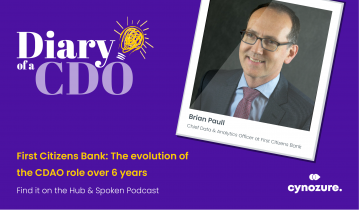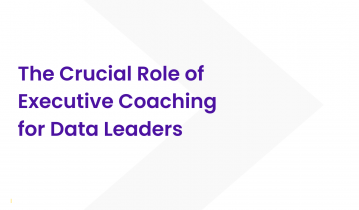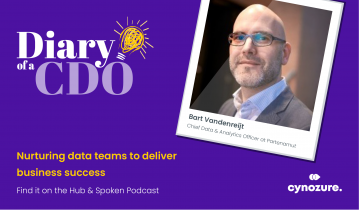Intro
Any effective team is supported by an effective strategy. Take American Football, for example – teams plan their approach with different ‘plays’ from the playbook (a compendium of close-to-the-ground strategies) to move the ball down the field and, ultimately, score more points.Scoring points means potentially winning the game, and coming out on top at the end of the season. This then attracts good players, sponsorship deals, fans spending more money, and greater success.
Your data is no different. Having a strategy, framework or roadmap to work from is vitally important. But what if something changes? What if the product line didn’t work? What if the customers you thought would buy, didn’t? Are you ready to react? This is where you need your own data playbook.
Your data ‘plays’
There are many different plays that can be run during a football game; maybe it’s the run block, pass block, running plays, or something else. These are all designed to ensure each player has a pre-agreed plan with the ability to flex, adjust and respond to the circumstances as they happen in the game.
Maybe you’re in the final third. You’re 1 point down with a minute to go. The opposition’s star quarterback is out injured, and their defence play fails. Each circumstance has a reaction, a way to turn everything into an opportunity to score points – to succeed.
Back to the data side of things, knee jerk reactions are hazardous for businesses. If you reacting to a bad week by increasing promotional activity, this can erode margins and customer confidence. Of course, it’s impossible (if not very impractical) to have all of your bases covered.
You can’t predict every circumstance and create a ready-made plan lined up to execute for them all. Likewise, it’s not practical to have multiple financial forecast scenarios at a macro level, to cater for these differing business events.
What’s the solution?
What you can have is a playbook that defines what you should do in certain regular and predictable circumstances. A set of plays that your team understands and is committed to executing, should they need to.
So, maybe you have a bunch of customers who exhibit negative behaviours and could stop shopping with you in the near future. What’s your retention play?
Maybe it’s to send them a bunch of flowers, and just say, “Hey.”
Maybe it’s to email them saying you miss them.
Maybe its a money off voucher for your latest range.
Maybe you know a load about them, and their propensity for certain categories or lines that you sell, so you can be more targeted and individual with how you respond to the potential loss of each of those customers.
You don’t want to be deciding this after they have stopped shopping with you. Yes, I want one of those playbooks, where do I buy one?
Building your playbook
The hard part is: you have to think of all the scenarios and come up with all the plays to respond to those scenarios. The playbook only works if you build it – you need to allocate the team accountabilities for each play and ensure they are executed at the exact time needed for maximum impact.
If you’ll allow me one more sports reference, there’s little point in running the ‘final minute of the game’ play midway through the first quarter. Likewise, don’t treat a customer that exhibits positive behaviours in the same way that you would treat a long-inactive customer.
What’s needed to a) understand which scenarios to prioritise and b) which plays to play in each of those scenarios comes down to data.
Different scenarios impact the business in different ways and to different degrees. The answer will be in your transaction data, your customer data, your social media feeds, the data that comes from browsing activity on your website, the calls into your contact centre, the market data to tell you about market conditions, your competitor data to understand whether others are having the same challenge, your previous and current forecast data. And so on.
The data tools in your playbook
On top of that, you need to have the capability and tools to get access to that data and generate the insight necessary to understand whats happened historically, how to segment your business and customers, which levers impact on your forecast accuracy, the success of previous above and below the line campaigns.
Advanced analytical and machine learning techniques are required to help capture the fact that a scenario is happening. You need your predictions of what is the best action to take with the customer who used to shop every category and now looks like they may be stopping. You need the response to be targeted and the experience to be personalised and your algorithms to improve and learn as new data flows in and data points are available.
You need this data in a timely fashion. You need it together. You need the right people and technology in place to continually test, learn, react, adjust to what you see. Your playbook cannot stay the same forever and your data will tell you when its time to switch things up.
Plays come from business strategies and you need your data to support your ambitions in running the business and making the right decisions when needed.
Of course, sometimes you’ll be blindsided. Sometimes you do just need to get in a room and make a call. However, give yourself the best chance to have data that enables you to have a fact-based, non-emotive discussion about options and make a rapid choice.







